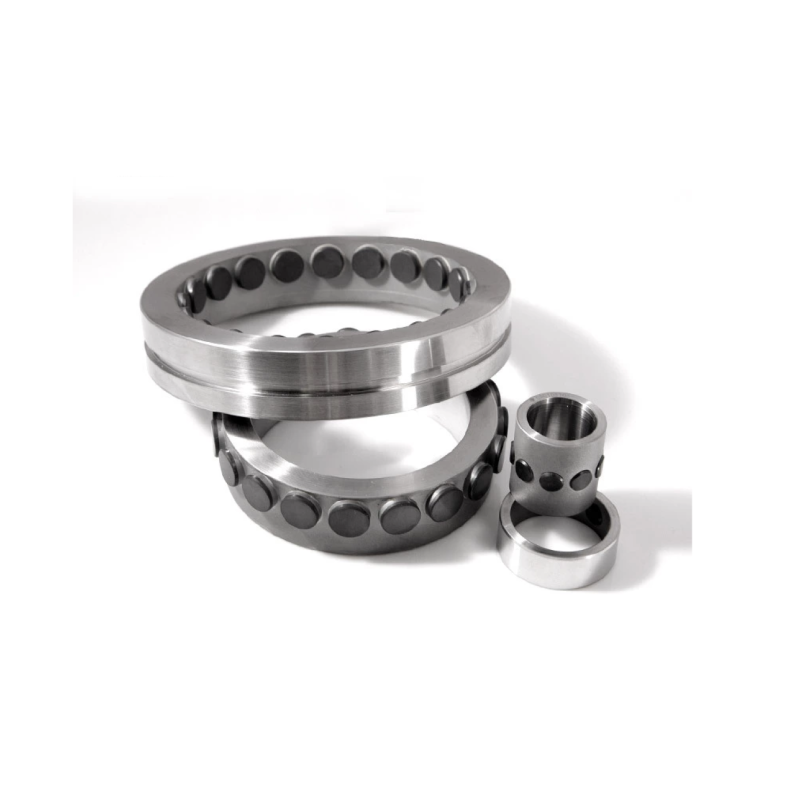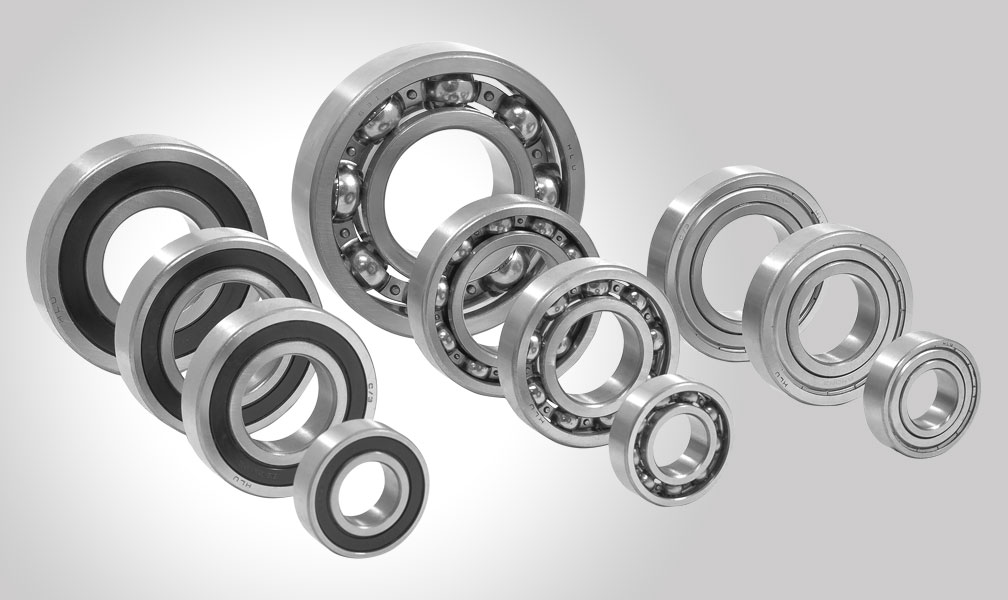Can you describe the load-carrying capacity and load ratings of radial bearings?
The load-carrying capacity and load ratings of radial bearings are crucial factors to consider when selecting and designing bearing systems for industrial applications. Here is a detailed description of these aspects:
Load-Carrying Capacity:
The load-carrying capacity of a radial bearing refers to its ability to support and distribute loads without excessive deformation or failure. It is a measure of the maximum load that a bearing can handle under specific operating conditions. The load-carrying capacity is influenced by several factors, including the bearing size, design, material, lubrication, operating speed, and temperature.
Radial bearings are designed to primarily support radial loads, which are forces acting perpendicular to the shaft’s axis. These loads can include the weight of rotating components, belt tension, pulley forces, or other radial forces. The load-carrying capacity of a radial bearing is specified for radial loads and is typically provided by the manufacturer in terms of dynamic load rating and static load rating.
Dynamic Load Rating:
The dynamic load rating of a radial bearing indicates the maximum radial load that the bearing can withstand under ideal operating conditions, with a calculated 90% reliability over a specified number of revolutions or operating hours. It represents the load at which the bearing is expected to have a basic rating life of one million revolutions.
The dynamic load rating takes into account factors such as the bearing’s geometry, material properties, and internal design, which affect its ability to distribute the load and resist fatigue failure. It is expressed in units of force (often in Newtons or pounds) and is provided by the bearing manufacturer. When selecting a radial bearing, it is crucial to ensure that the anticipated radial load falls within the dynamic load rating to prevent premature bearing failure.
Static Load Rating:
The static load rating of a radial bearing refers to the maximum radial load that the bearing can withstand without permanent deformation or damage while stationary. Unlike the dynamic load rating, the static load rating does not account for the bearing’s ability to handle fatigue-related failures over a specified number of revolutions but focuses on the load capacity under static conditions.
The static load rating is typically higher than the dynamic load rating due to the absence of rotational forces and associated fatigue effects. It provides an indication of the bearing’s ability to support heavy loads without undergoing permanent deformation. Like the dynamic load rating, the static load rating is expressed in units of force and is provided by the bearing manufacturer. It is crucial to ensure that the static load rating exceeds the anticipated radial load to prevent bearing damage or failure.
Load Rating Calculation:
The load ratings of radial bearings are determined through standardized calculation methods based on industry standards, such as ISO and ANSI/ABMA standards. These calculations consider factors such as the bearing’s geometry, material properties, internal design, and expected operating conditions.
The load ratings are influenced by various factors, including the number and size of the rolling elements, the contact angle, the material strength, and the bearing’s internal clearance. Manufacturers perform extensive testing and analysis to determine the load ratings of their radial bearings and provide the values in their product catalogs to assist engineers and designers in selecting the appropriate bearing for specific applications.
In summary, the load-carrying capacity and load ratings of radial bearings play a critical role in determining their suitability for various industrial applications. The dynamic load rating indicates the maximum radial load that a bearing can handle under ideal operating conditions and a specified reliability level, while the static load rating represents the maximum radial load the bearing can withstand without permanent deformation while stationary. Understanding these load ratings is essential for selecting radial bearings that can reliably and safely support the anticipated loads in industrial machinery and equipment.
Are there specific types of radial bearings, and what are their unique characteristics?
Yes, there are several specific types of radial bearings, each with its unique characteristics and applications. These types of bearings are designed to accommodate different loads, operating conditions, and specific requirements. Here are some commonly used types of radial bearings along with their unique characteristics:
1. Deep Groove Ball Bearings:
Deep groove ball bearings are the most common type of radial bearings. They have deep raceway grooves that enable them to carry both radial and axial loads. Deep groove ball bearings are known for their versatility, high-speed capability, and relatively low cost. They are suitable for a wide range of applications, including electric motors, appliances, automotive components, and machinery.
2. Angular Contact Ball Bearings:
Angular contact ball bearings are designed to handle both radial and axial loads but primarily excel in supporting combined axial loads and moment loads. They have contact angles that allow them to carry higher thrust loads compared to deep groove ball bearings. Angular contact ball bearings are commonly used in applications such as machine tool spindles, automotive wheels, and pumps where precise axial and radial load support is required.
3. Cylindrical Roller Bearings:
Cylindrical roller bearings have high radial load-carrying capacity and are suitable for applications with heavy radial loads. They have cylindrical rollers as rolling elements and can accommodate axial displacement within the bearing. Cylindrical roller bearings are commonly used in industries such as construction equipment, gearboxes, and large motors.
4. Tapered Roller Bearings:
Tapered roller bearings are designed to handle both radial and axial loads. They have tapered raceways and rollers arranged in a way that allows the bearing to support higher axial loads in one direction. Tapered roller bearings are commonly used in automotive applications, including wheel bearings, transmissions, and differentials, as well as in industrial machinery such as mining equipment and machine tools.
5. Spherical Roller Bearings:
Spherical roller bearings can accommodate high radial loads and moderate axial loads. They have barrel-shaped rolling elements and self-aligning capabilities, allowing them to compensate for misalignment and shaft deflection. Spherical roller bearings are commonly used in heavy-duty applications such as mining, paper mills, and steel mills, where there are significant misalignment or heavy load conditions.
6. Needle Roller Bearings:
Needle roller bearings have cylindrical rollers that are much smaller in diameter compared to other radial bearings. They have a high length-to-diameter ratio, enabling them to handle high radial loads in a compact design. Needle roller bearings are commonly used in applications such as automotive transmissions, motorcycles, and industrial machinery.
7. Thrust Bearings:
Thrust bearings are designed to handle axial loads primarily and are often used in conjunction with radial bearings to support combined axial and radial loads. They come in various designs, including ball thrust bearings, cylindrical thrust bearings, and tapered roller thrust bearings. Thrust bearings are commonly used in automotive, aerospace, and industrial applications that require support for heavy axial loads.
8. Self-Aligning Ball Bearings:
Self-aligning ball bearings have two rows of balls and a spherical outer ring raceway, allowing them to accommodate misalignment between the shaft and housing. They can handle both radial and axial loads and are commonly used in applications where shaft misalignment is expected, such as conveyor systems, textile machinery, and agricultural equipment.
These are just a few examples of specific types of radial bearings, and there are many other variations and specialized designs available for specific applications. Each type of bearing has unique characteristics that make it suitable for particular operating conditions, load requirements, and performance expectations.
What are the eco-friendly or sustainable aspects of radial bearing materials?
Radial bearing materials play a crucial role in determining the environmental impact and sustainability of the bearings. Several aspects of radial bearing materials contribute to their eco-friendliness and sustainability. Here’s a detailed explanation of these aspects:
1. Material Selection:
The choice of bearing material can have a significant impact on its environmental footprint. Opting for materials that are eco-friendly and sustainable is important. Some materials commonly used in radial bearings, such as steel, have high recycling rates and can be recycled at the end of their life cycle. This reduces the demand for new raw materials and minimizes waste generation. Additionally, selecting materials that are abundant and easily sourced further enhances the sustainability of radial bearings.
2. Recyclability:
Radial bearings made from recyclable materials are considered environmentally friendly. When bearings reach the end of their useful life, they can be recycled, and the materials can be repurposed for manufacturing new bearings or other products. Recycling reduces the need for virgin materials extraction, conserves resources, and reduces energy consumption and greenhouse gas emissions associated with the production of new materials. Choosing bearing materials that are easily recyclable promotes a circular economy and minimizes waste generation.
3. Reduced Environmental Impact:
Some radial bearing materials have a lower environmental impact compared to others. For example, selecting materials with lower carbon footprints or materials that require less energy-intensive manufacturing processes can contribute to sustainability. Materials like ceramic or composite bearings often have lower energy requirements during production compared to traditional steel bearings. By reducing energy consumption and associated emissions, these materials help mitigate the environmental impact of bearing manufacturing.
4. Lubrication and Friction Reduction:
The choice of bearing material can also influence the lubrication requirements and friction levels. Bearings made from materials with inherent self-lubricating properties or low friction coefficients can reduce the need for external lubrication or the use of lubricants with potential environmental impacts. Self-lubricating materials such as polymers or certain composites can minimize the use of oil or grease lubricants, which can be environmentally harmful if not managed properly. Reduced lubrication requirements contribute to sustainable bearing operation by minimizing lubricant consumption and potential contamination risks.
5. Extended Service Life:
Using durable and long-lasting bearing materials helps extend the service life of the bearings. Bearings that require less frequent replacement or maintenance have a positive impact on sustainability. By reducing the frequency of bearing replacements, less waste is generated, and the consumption of raw materials is minimized. Additionally, extending the service life of bearings reduces the need for energy-intensive manufacturing processes associated with frequent replacements, further reducing the environmental impact.
6. Energy Efficiency:
Radial bearing materials can contribute to energy efficiency in mechanical systems. Materials with low friction coefficients and high wear resistance properties help minimize energy losses due to friction and improve overall system efficiency. By reducing energy consumption, sustainable bearing materials support energy conservation efforts and contribute to the reduction of greenhouse gas emissions associated with energy production.
7. Compliance with Environmental Regulations:
Eco-friendly and sustainable radial bearing materials often comply with environmental regulations and standards. These materials are designed to meet specific requirements regarding the use of hazardous substances, waste generation, and disposal. Compliance with regulations such as the Restriction of Hazardous Substances (RoHS) directive ensures that bearing materials are free from harmful substances, protecting human health and the environment.
8. Life Cycle Assessment:
A comprehensive life cycle assessment (LCA) of bearing materials can provide insights into their environmental impact. LCA evaluates the environmental effects associated with a product throughout its entire life cycle, from raw material extraction to end-of-life disposal. Conducting LCAs helps identify areas of improvement, optimize manufacturing processes, and select materials with lower environmental impacts.
By considering these eco-friendly and sustainable aspects of radial bearing materials, manufacturers and end-users can make informed choices that minimize their environmental footprint. Sustainable bearing materials contribute to resource conservation, waste reduction, energy efficiency, and compliance with environmental regulations, fostering a more sustainable and environmentally responsible industrial ecosystem.
editor by CX 2024-04-22




